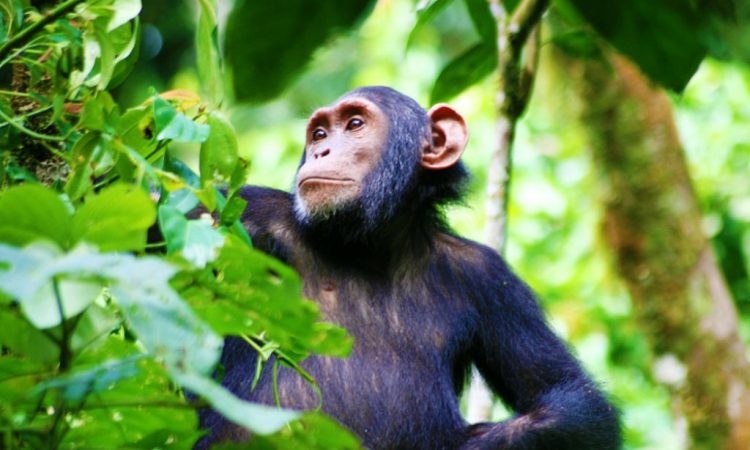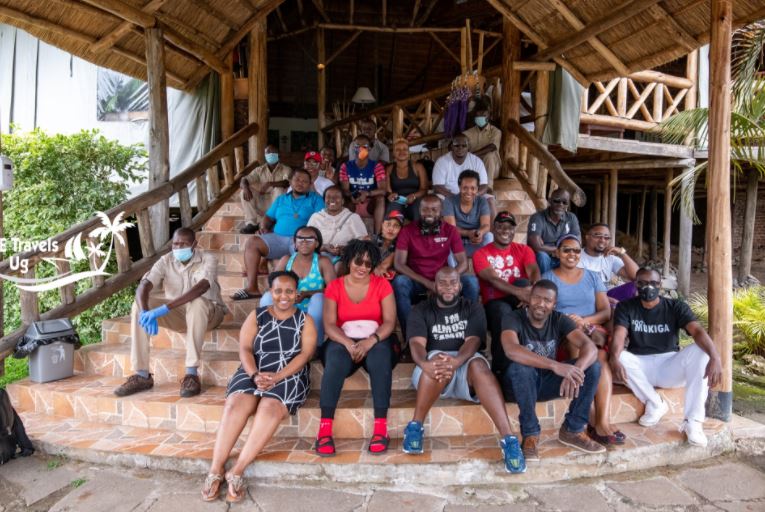
The tourism sector in Uganda is thriving once again following the partial lifting of the Coronavirus (COVID-19) lockdown, which has seen tourists both and foreign flock to various national parks, game reserves, and other tourist attractions.
One of the most sought after tourist destinations currently is Kibale Forest National Park, which is located in Kabarole District, which a group of Ugandan tourists visited recently and they enjoyed themselves to the fullest, amidst observation of the Standard Operation Procedures (SOP) aimed at preventing the spread of COVID-19.
About Kibale Forest National Park
Kibale is highest at the park’s northern tip, which stands 1,590m above sea level. The lowest point is 1,100m on the floor of the Albertine Rift Valley to the south.
351 tree species have been recorded in the park, some rise to over 55m and are over 200 years old.
Kibale’s varied altitude supports different types of habitat, ranging from wet tropical forest on the Fort Portal plateau to woodland and savanna on the rift valley floor.
Kibale Forest National Park is one of Africa’s foremost research sites. While many researchers focus on the chimpanzees and other primates found in the park, others are investigating Kibale’s ecosystems, wild pigs and fish species, among other topics
Kibale National Park contains one of the loveliest and most varied tracts of tropical forest in Uganda. Forest cover, interspersed with patches of grassland and swamp, dominates the northern and central parts of the park on an elevated plateau.
Chimpanzees and Birding
Kibale is famously known for Chimpanzee tracking, since it is home to a total of 70 mammal species, most famously 13 species of primates including the chimpanzees.
Besides the primates, it also contains over 375 species of birds. Kibale adjoins Queen Elizabeth National Park to the south to create a 180km-long corridor for wildlife between Ishasha, the remote southern sector of Queen Elizabeth National Park, and Sebitoli in the north of Kibale National Park.
The Kibale-Fort Portal area is one of Uganda’s most rewarding destinations to explore. The park lies close to the tranquil Ndali-Kasenda crater area and within half a day’s drive of the Queen Elizabeth, Rwenzori Mountains and Semuliki National Parks, as well as the Toro-Semliki Wildlife Reserve.
Accommodation and Camping

The most popular camping site in Kibale Forest National Park is Crater Safari Lodge, which offers luxury accommodation and features a swimming pool with scenic surrounding landscapes.
The units offer a seating area, fireplace, and a mosquito net is draped over the bed. Each unit has a private entrance, as well as a balcony or patio offering views of the garden.
At Crater Safari Lodge there is a restaurant, bar and lounge. Other facilities include a craft shop, mobile spa facility and a campfire area where guests can relax and enjoy views of the Crater Lake.
Activities and excursions range from cultural tours, butterfly collection, fishing, birding, hiking and Chimpanzee tracking.
